High Resolution Blues: how the industry is failing with hi-res audio
The music industry seems very confused at the present time about what to do with, and how to market, high resolution (hi-res) audio. We thought it might be interesting to examine some of the issues surrounding hi-res, but before we do that, let’s answer an important question: what exactly is hi-res audio?
In a sentence, hi-res audio is better-than-CD quality.
If you want more than a sentence, here comes the science bit… Hi-res is digital audio data that has a higher bit-rate than standard CD. This bit rate describes the number of digital ‘bits’ of information for each sound sample. A CD is 16-bit whereas hi-res is normally 24-bit. Generally speaking, a higher bit-rate will give you a better quality sound when converted to analog. But bit-rate is not the whole story. The other element with hi-res is how many of these 24-bit sound samples exist per unit of time. This sampling frequency is expressed in hertz (Hz). A CD has a frequency of 44,100 Hz or 44.1 kHz. Hi-res audio can reach up to 192 kHz – more than four times the frequency of a standard CD. The combination of higher bit-rate and a higher frequency gives you high resolution audio.
We have established that CDs cannot deliver hi-res audio, so what options do record companies have to deliver this superior sound to consumers?
Format Wars and confused consumers
At the turn of the 21st century two formats emerged with an ambition to supersede the CD – Super Audio CD (SACD) and DVD-Audio (DVD-A).
Although there were technical differences (notably DVD-A being capable of offering video content) both were capable of delivering hi-res audio in the form of surround sound and/or stereo, from a five-inch optical disc. Unfortunately, the two similar formats served only to confuse the general public. Unlike the Betamax-VHS format war of the early 1980s, no single ‘winner’ emerged. Consumers were being asked to pay more money for the new optical discs and needed new expensive hardware. Many, understandably, were hesitant to spend hundreds of pounds or dollars on what could become the Betamax of the noughties.
Despite the industry failing to agree over one standard, what really burst the hi-res bubble was mainstream consumers increasingly seeking convenience over quality. MP3s, iPods, and docking stations replaced talk of amplifiers, speaker cable and cartridges when music hardware came up in pubs and bars. Never mind aspiring to higher quality audio, people were apparently willing to downgrade to lossy MP3s, happy to have ‘1000 songs in their pocket’.
Blu-ray as a hi-res delivery format
No one would argue that hi-res audio ever broke through to the mainstream, but more than a decade on, hi-res looks to be getting a shot in the arm from the Blu-ray high definition video format.
Many people already own relatively cheap Blu-ray players (often with attendant surround sound systems) and so they already have the necessary hardware set-up to enjoy high-res audio delivered via Blu-ray. The music industry does seem to have recognised this (if, rather slowly) and a few Blu-ray audio-only (stereo and/or surround) discs have been issued in the last six months or so. The advantage here is that these discs can be produced relatively cheaply, because Blu-ray is already produced is massive quantities for the home video market and the supply chains and pressing plants already exist.
Who is it for and how do I sell it?
This brings us on to how the industry currently markets hi-res audio. It is frankly a complete mess and one wonders if they wouldn’t prefer hi-res to crawl into a corner and die, so they don’t have to deal with it.
Is it an audiophile-only concern – for ‘geeks’ who spend thousands of pounds or dollars on hi-fi separates? Is it an alternative to the CD or download, to be sold at the £10-£20 price point? Should it be locked securely in a Super Deluxe Edition box set as an incentive for the high-income demographic to get their wallets out? Maybe downloading (e.g. HDtracks.com) is the way to deal with hi-res, negating the need for the pesky optical disc? Or should decisions about hi-res be left to local territories? (i.e. Japan-only SACD releases).
No one seems to be in any agreement on this. There appears to be no industry-wide cooperation or direction on to how work together for the mutual benefit of all parties (and ultimately consumers).
Hi-res in 2012
Let’s look at some high profile releases in the last 12 months or so and see how hi-res was dealt with.
 Paul and Linda McCartney – RAM deluxe edition box set
Paul and Linda McCartney – RAM deluxe edition box set
(Hear Music, May 2012 – £85)
No physical hi-res format included in this five-disc set. However, McCartney’s an industry leader when it comes to hi-res downloads. A card within this set (and all three previous deluxe albums in his archive collection) includes a code for a free hi-res download and even included two sets of hi-res files – ‘limited’ and ‘unlimited’ with the later offering very wide, full dynamic range at the expense of ‘loudness’.
 The Rolling Stones –
The Rolling Stones –
GRRR! Super Deluxe Edition
(Universal October 2012 – £105)
No physical hi-res included and no download either. Zilch. On the positive side a Blu-ray-Audio (stereo, not surround) sprang up unannounced after all the initial formats were released (not listed in the press release). This was great value at around £12, but Super Deluxe Edition purchasers (already depressed by how crap the box was) had further reason to feel ‘Doom and Gloom’ by having to spend and extra £12 on top of the £105 to get hi-res audio.
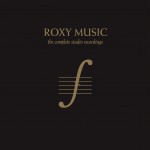 Roxy Music –
Roxy Music –
The Complete Studio Recordings
(EMI August 2012 – £50)
The press release announced that this set would have every Roxy album on “DVD format as high-resolution audio, transferred digitally from the original analogue masters, making this release an absolute ‘must have’ for Roxy Music fans and collectors”. Then somebody changed their mind and the DVDs were axed and this set did not include any hi-res audio at all, whether physical or download.
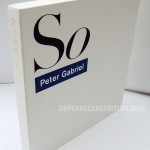 Peter Gabriel –
Peter Gabriel –
So Deluxe Box
(EMI October 2012 – £100)
No physical hi-res included, but a download card offered the newly remastered album and three bonus tracks as hi-res FLAC files. The Live In Athens set, and So DNA demos were not included as part of this hi-res offering.
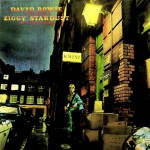 David Bowie –
David Bowie –
The Rise and Fall of Ziggy Stardust reissue
(EMI June 2012 – £15)
A Vinyl/DVD-Video combo release gave buyers the new 2012 remaster as hi-res stereo as well as the 2003 Ken Scott in hi-res stereo. A 5.1 mix was also included but due to the limitations of the DVD-Video format (unlike DVD-A, SACD or Blu-ray) this wasn’t hi-res.
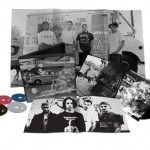 Rage Against The Machine XX – 20th Anniversary Deluxe Box
Rage Against The Machine XX – 20th Anniversary Deluxe Box
(Sony Nov 2012 – £60)
Despite four discs and a vinyl version, there is no place for any hi-res audio either in physical or download format
 Emerson Lake & Palmer – Tarkus deluxe edition
Emerson Lake & Palmer – Tarkus deluxe edition
(Sony August 2012)
A DVD-Audio included (along with the two CDs) offering the album in hi-res stereo and surround. A few alternates were even included.
 Pink Floyd –
Pink Floyd –
The Wall Immersion Box Set
(EMI February 2012)
Despite including Blu-ray discs with hi-res stereo and surround mixes in the preceding ‘Immersion’ boxes (The Dark Side Of The Moon and Wish You Were Here), no physical or downloadable hi-res was offered with The Wall ‘Immersion’ box.
 Michael Jackson –
Michael Jackson –
Bad 25 Anniversary reissue
(Sony Sep 2012)
The DVD-Video in this set could easily have included a hi-res stereo version of Jackson’s 1987 album, but it either didn’t occur to anyone, or they made an assumption that nobody would be interested. Hence, no hi-res audio either physical or download with this set.
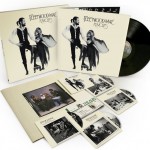 Feetwood Mac –
Feetwood Mac –
Rumours 35th Anniversary Deluxe Edition
(Rhino, January 2013)
Warner Music released Rumours on hi-res DVD-A, with a surround sound version, over a decade ago. They also released a SACD edition in Japan just LAST YEAR with the same surround sound mix. Both are quite expensive to get hold of, so it would make sense for them to include the same hi-res version within the US/Canadian and European deluxe set due this coming January, wouldn’t it? YES, it would make sense. NO, they haven’t included it. No hi-res at all, either as download, standalone Blu-ray audio, or as part of the deluxe box set. Arghhh!!!
Conclusions
So what to conclude from all this? Here’s a few thoughts:
No consistency within organisations. EMI provided hi-res as a download with Peter Gabriel, but not Roxy Music. Sony gave us a superb DVD-A with ELP but weren’t interested with Michael Jackson or Rage Against The Machine.
More chance with the ‘classics’. If you’re a fan of classic rock (McCartney, The Rolling Stones) you probably have more chance of getting hi-res than if you like ‘pop music’ (no hi-res in recent Level 42 or INXS deluxe sets).
The past is irrelevant. If the album has been previously released in a hi-res format, this does no guarantee inclusion with new sets. Bowie’s Ziggy reissue utilised the old 2003 SACD stereo mix in hi-res, but Warner Music’s forthcoming reissue of Fleetwood Mac’s Rumours ignores two previous hi-res releases.
The artists themselves are influential. Pink Floyd insisted on a separate SACD release of Wish You Were Here, despite the inclusion of a hi-res Blu-ray within the ‘Immersion Box’. Yet the same group, didn’t insist on any hi-res at all when it came to The Wall. Similarly Peter Gabriel probably made sure a hi-res download was the minimum requirement with the otherwise disappointing So box.
No one can agree on formats. Some releases use DVD-Video for hi-res stereo (Bowie/Ziggy), while others utilise the DVD-Audio format (Emerson Lake & Palmer). Blu-ray was used by Pink Floyd and The Rolling Stones, and our hi-res format of choice – the SACD – seems to be growing (modestly) in popularity with specialist labels like Analogue Productions reissuing albums from Norah Jones and The Doors in this format.
Thinking outside the box. Should hi-res be included as part of a deluxe box or as a standalone release, or both? At the moment IF a physical hi-res is released (a big ‘if’) there is no consistency (see Rolling Stones v Pink Floyd).
Final Thoughts
We currently seem to be witnessing a combination of greed, incompetence and ignorance when it comes to archival releases and high resolution audio from the major record labels.
There was no good reason for The Rolling Stones not to include the hi-res Blu-ray as part of the GRRR! Super Deluxe Edition box set. Greed almost certainly led to the decision to sell it separately, but this did have the advantage of pleasing hi-res fans who didn’t want the big set.
The lack of hi-res (and surround) in the forthcoming Rumours Deluxe set is ridiculous. Hi-res fans are having to seek out old ten year old DVD-As or import SACDs from Japan to get what they want.
Hi-res audio is a bit like giving your car a good clean (or valet) when you want to sell it. The car hasn’t changed but it becomes more attractive to potential purchasers. It may take you a little time and effort (and expense) to make it sparkle and shine, but you will expand the market for your vehicle, and it becomes a more attractive proposition. You would think that record companies would want their products to shine and sparkle, and sound as good possible, but it appears not to be the case.
With these expanded box sets, the irony is that much effort is put into locating tapes, searching out old demos, putting books together and photo editing pictures. In comparison to that, seeking out, or creating a clean, dynamic hi-res master of a recording that already exists would seem a relatively straightforward process. These super deluxe box sets are supposed to be celebrating one album, first and foremost, so why pass up the opportunity to present the album in the very best quality possible? Why waste time and energy creating a stupid, useless, oversized book (see: GRRR!) and ignore the quality of how the music is presented?
It is hard to see things changing unless consumers make their views known. So if you are a hi-res audio enthusiast, then do leave a comment on this post and let the executives at record labels know how you feel. If you work in the industry, why not do the same and let us understand your thoughts or strategies regarding hi-res.
Paul Sinclair – 20 December 2012

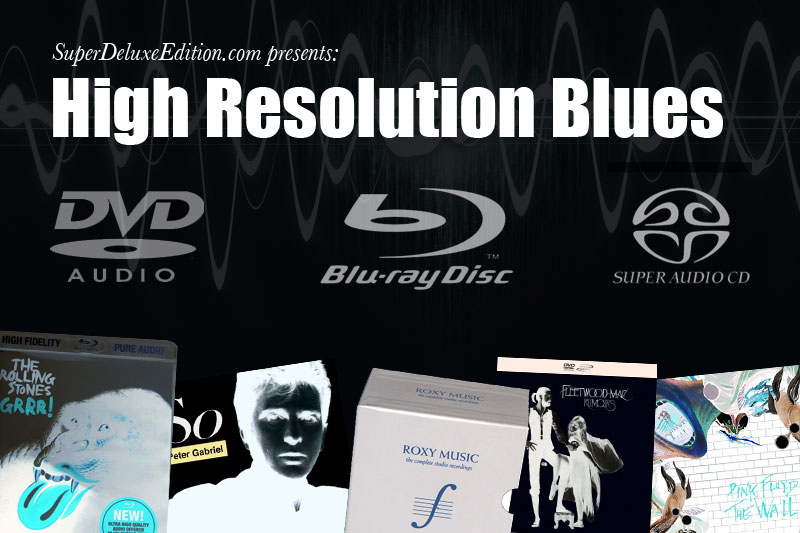

 SDEtv
SDEtv


By Paul Sinclair
43